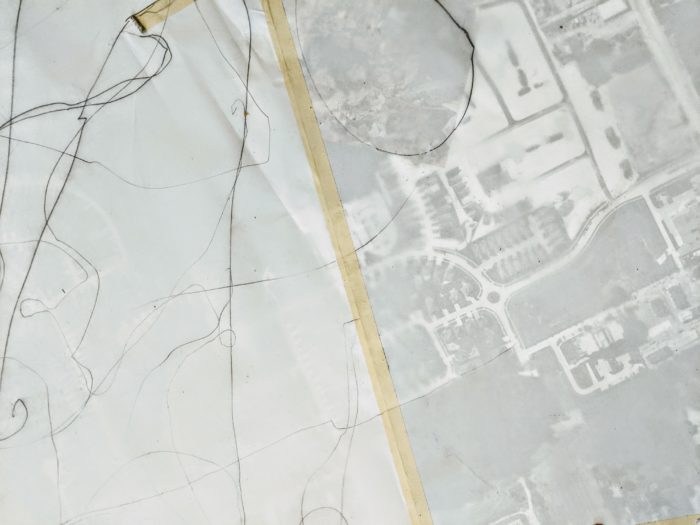
Mapping Children’s Place Stories 绘制儿童的故事地图
The following is an excerpt from an English translation of an article published in Shanghai Education, 2021:
Our research, pedagogical work and everyday moments with children are united by situating educational practices in a particular place and, simultaneously, situating place within particular educational practices. Place stories offered to us by children are taken seriously as a contribution to this practice, in so far as they become the web that captures our everyday dwelling within ‘our’ place and time. Our intent is to craft pedagogies that are responsive on both global (climate change, human-non-human relations, colonization, urbanization) and local (within/of a particular educational setting) scales. By mapping children’s place stories within these pedagogies, we also intend to foreground alternative stories that are often overlooked within the dominant developmental pedagogical narratives (see Land et al, 2020; Vintimilla & Pacini-Ketchabaw, 2020).
Working within the common worlding framework, we are guided by two principles. Firstly, we resist the divide between nature and culture by intentionally merging the outdoor walks (nature) and indoor classroom (cultural) ‘activities’. Secondly, we deliberately avoid reinforcing dominant western totalising narratives. In this case we challenge the map as a transcendent ‘view from above’ (Haraway, 1988) and closed-ended instrument of the colonial gaze, which charts and reinforces dominant western representations of place as knowable, measurable, and claimable. The map we wish to tear through, cover over, tease apart, and blow up, this image that originated from a corporate satellite that wishes to ‘efficiently’ navigate our daily movement, is the very manifestation of Doreen Massey’s poetic and prosaic musing over a problem that “comes if you fall into thinking that that vertical distance lends you truth” (2005, p. 107). We wish to rage against the colonial mountain-top cataloguing stance which wishes to render landscape “a dormant machine waiting to be cranked into activity” (Pratt, 1992, p. 149). Instead, the mapping of stories we practice with children are a process open to uncertainty, curiosity, multiple ways of knowing and storying, and influences other than human. There is no goal of certainty-seeking, but there is an intention for muddling, wondering, not finishing, never finishing. Here, our paying attention to children’s imaginings as they arise from encounters with place (pumpkin-eaters, banana tree, etc) are far from being actions of admiration over children’s imaginations, but are rather pedagogical choices aimed to trouble the object integrity of a colonial mapping project as it zooms on a single neighbourhood.


We print out a black-and-white satellite image of the early-learning centre and adjacent streets on a large sheet of paper. To trouble the image of the map as a flat surface, we crease it and lay half on the floor and half up the wall. To trouble the concept of the map as a complete and accurate representation of our neighbourhood, we set out to overlay it with new lines, new words, new images, and new kinds of information. This information emerges from unconventional sources like imagination, non-humans, and practices of wondering, noticing and collective retelling. To gather it, we must first walk the neighbourhood, have encounters, and make our own place stories.
It is mid-winter and we are slowly walking with a group of preschool children to a nearby small forest. The walk takes us past an old pumpkin patch that somehow persists from a farm, now gone. At this time of the year the patch is bear, but the children know it’s still there. They explain: “Pumpkin-eaters have taken all the pumpkins”.
Further into the new suburbs, we walk past front lawns with well-cared-for shrubbery. One showcases a pruned specimen of a single weeping white mulberry. Unlike the native Canadian red mulberry, the white mulberry is an introduced species. Hardy and tolerant of most soils, it is a regular on the list of plants recommended for children’s gardens. It’s advertised as a ‘nature-made’ ‘secret hideout’: ‘just cut an opening in the branches, or prune shorter for easier supervision’! Last year, the homeowners decorated their weeping mulberry with Christmas ornaments, which reminded the children of bananas. They named it Banana Tree. There hasn’t been anything on the tree since last Christmas, but the story remains, and a stop by Banana Tree is a must on the walks to and from the forest. Today, the children explain: “Somebody stole the bananas!” They trace evidence of stolen fruit through a series of rust circles on the pavement (image below). We believe they know that prized things have been taken from this place, and that their remains are etched onto the ground.
